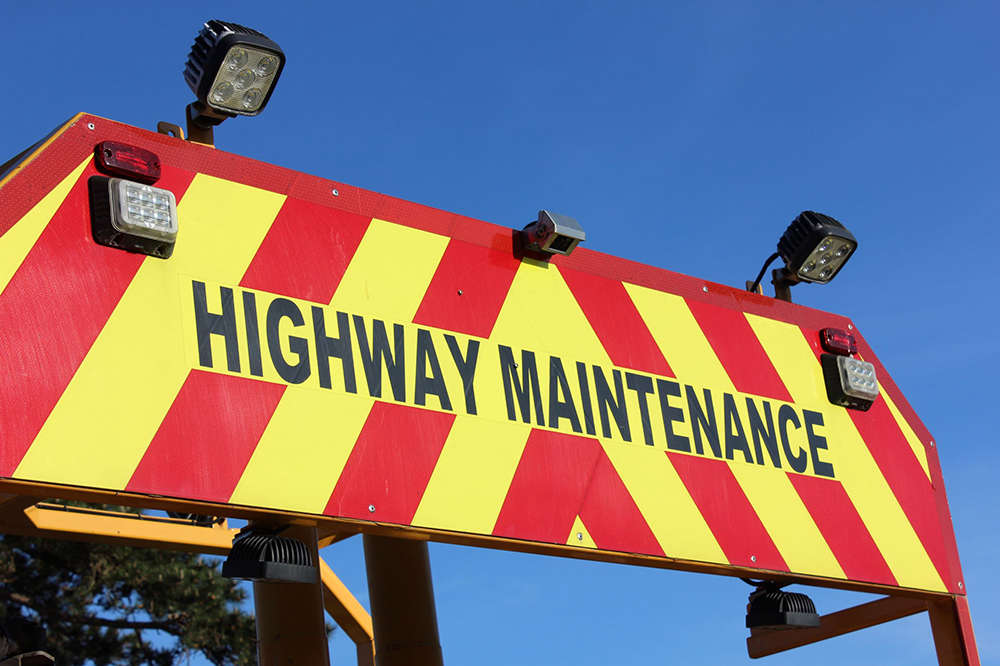
Island Roads' annual survey of highway trees has found nearly half of those inspected have a significant level of ash dieback disease.
The Woodland Trust estimates the disease could kill around 80% of ash trees across the UK, changing the landscape forever and threatening many species which rely on ash.
Ash dieback is now found throughout the country, but it can take some years before trees are visibly affected.
Recently, Island Roads’ annual inspection of trees has taken particular account of ash dieback – a fungal infection that grows inside the tree, eventually blocking its water transport systems, causing it to die.
Sadly, of the 418 trees inspected by Island Roads recently, 169 – about 40% - have been identified with ash dieback. Island Roads says it will now develop a plan for the best management of these infected trees.
Factors such as safety, contractual requirements, and impact of felling work on the travelling public will all be considered. Government advice is that ash trees should not be felled pre-emptively but monitored to ensure they do not become a danger.
However, the extent of the disease is such that at least around 60 trees will need to be felled in the coming months.
Data from the recent survey is also shared with the council’s tree officer to help the authority manage the risks from ash dieback on trees on land owned by the authority and to inform guidance for private landowners on what to do with infected trees.
Mark Roberts, Island Roads asset manager, said:
“As expected, ash dieback has been found in our treestock and will need careful management in the coming months and years.
“No one likes to see trees cut down but safety has to be the primary consideration and it will, unfortunately, be necessary to remove trees that pose a risk to highway users. I am afraid that there will be other landowners who will need to take similar action because unfortunately, trees do not recover from ash dieback.”
With the summer drawing to a close, Island Roads is reminding landowners of the need to manage trees so they do not pose a risk to road users.
The advice in this respect is available in a leaflet entitled Inspect and Protect which is available here https://islandroads.com/inspect-and-protect/
Mark said:
“Landowners must take certain action to protect members of the public – and themselves – from falling trees or branches. The Inspect and Protect leaflets outline these steps and we are always here to advise landowners if they are in any doubt how to safely manage trees on their land that may affect the highway.”
More information: https://www.forestresearch.gov.uk/tools-and-resources/pest-and-disease-resources/ash-dieback-hymenoscyphus-fraxineus/

 Engine Problems Lead To Yarmouth RNLI Callout To Osborne Bay
Engine Problems Lead To Yarmouth RNLI Callout To Osborne Bay
 Ryde Academy Students Donate To Two Worthy Causes At Christmas
Ryde Academy Students Donate To Two Worthy Causes At Christmas
 Road Improvement Works To Get Underway From The Very Start Of The New Year
Road Improvement Works To Get Underway From The Very Start Of The New Year
 Isle of Wight Youth Trust Benefits From Big Give Support
Isle of Wight Youth Trust Benefits From Big Give Support
 Council Chair 'Furious' Over Floating Bridge Replacement Fiasco
Council Chair 'Furious' Over Floating Bridge Replacement Fiasco
 Fire Service Travel To Island Contributes To Huge Budget Overspend
Fire Service Travel To Island Contributes To Huge Budget Overspend
 Department Approaching Completion In Ryde As Opening Date Announced
Department Approaching Completion In Ryde As Opening Date Announced
 Guidance Issued Over Sharps Disposal As Waste Teams At Risk
Guidance Issued Over Sharps Disposal As Waste Teams At Risk
 Police Warnings Over E-Scooters Ahead Of Christmas Day
Police Warnings Over E-Scooters Ahead Of Christmas Day
 Controversial Freshwater Housing Proposal Turned Down
Controversial Freshwater Housing Proposal Turned Down
 Rare Mantis Shrimp Discovery Made In Waters Off Isle Of Wight
Rare Mantis Shrimp Discovery Made In Waters Off Isle Of Wight
 Man In 50s Confirmed Dead Following Newport Crash
Man In 50s Confirmed Dead Following Newport Crash
 Pedestrian In Hospital With Serious Injuries Following Early Morning Motorcycle Crash
Pedestrian In Hospital With Serious Injuries Following Early Morning Motorcycle Crash
 Cowes Stately Home To Have Facilities Upgraded As Part Of Approved Renovation
Cowes Stately Home To Have Facilities Upgraded As Part Of Approved Renovation
 Ofsted Deliver Glowing Report For 'Welcoming' And 'Highly Ambitious' Island Primary School
Ofsted Deliver Glowing Report For 'Welcoming' And 'Highly Ambitious' Island Primary School
 Help Available For Islanders To Cut Energy Bills
Help Available For Islanders To Cut Energy Bills
 Cowes Lifeboat Performs Mid-Solent Rescue Of Fishing Boat
Cowes Lifeboat Performs Mid-Solent Rescue Of Fishing Boat
 Christmas Shopping With A Difference In Ryde – Half A Mile Out To Sea!
Christmas Shopping With A Difference In Ryde – Half A Mile Out To Sea!
 Home-From-Home' Nursery Given 'Outstanding' Ofsted Grade
Home-From-Home' Nursery Given 'Outstanding' Ofsted Grade


